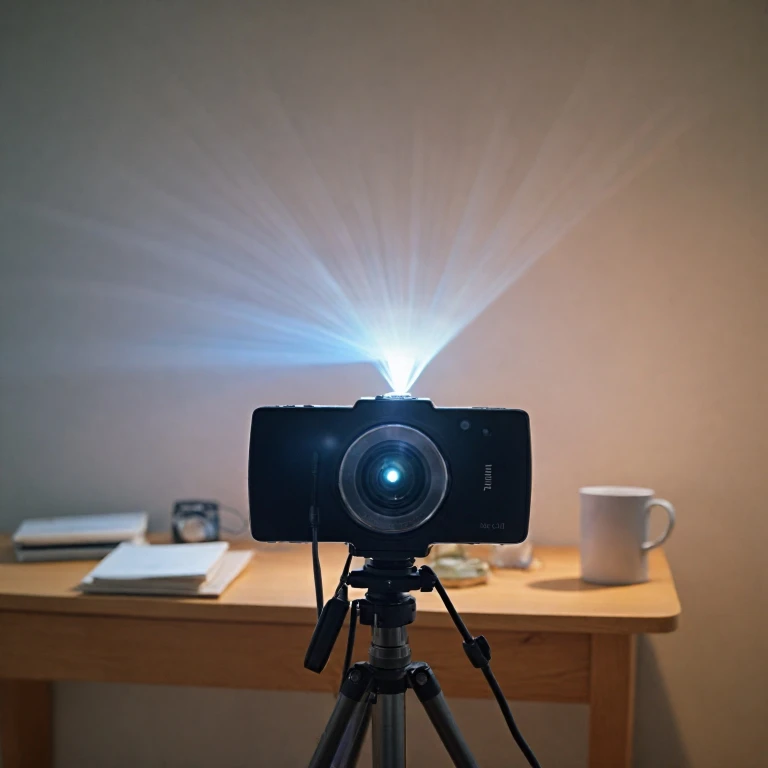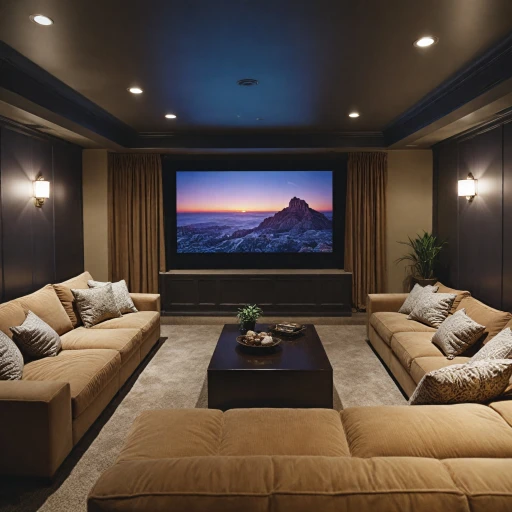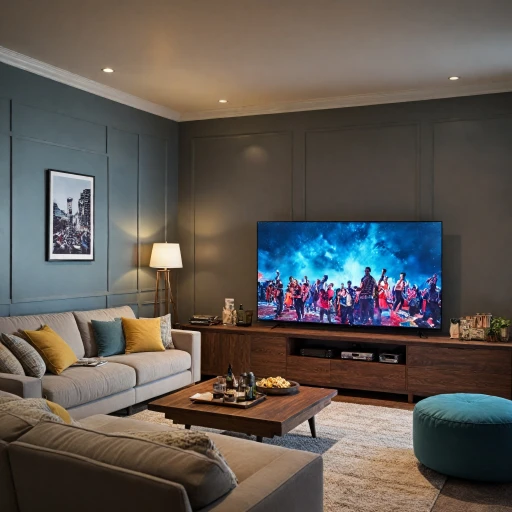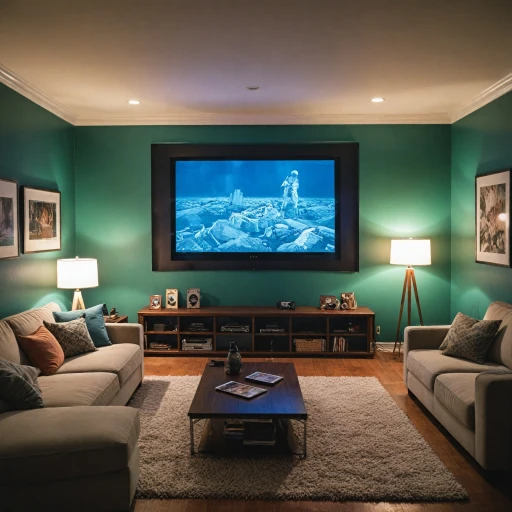Understanding USB Connections for Projectors
Unveiling the Role of USB Connections
Understanding the importance of USB connections within the realm of home theater projectors can transform your viewing experience. A USB connection acts as a crucial bridge between your phone and projector, allowing you to share content from one screen to another. With the right USB cable, you can project videos, pictures, and even mirror your phone screen seamlessly. When considering how to connect your phone to a projector, it's essential to know the type of USB port available on your devices, be it a USB type A or USB type C. This determines the kind of USB cable or adapter (such as a USB to HDMI) you will require to establish a connection. Some projectors come with multiple ports, which may include USB, HDMI, and even VGA ports. For more information on optimizing your projector connections, you can check out this detailed guide. It’s also worth mentioning that some modern projectors support wireless and Bluetooth connections. However, USB connections remain a popular choice due to their stability and ease of use. Navigating input settings on your smartphone is also key when planning to project content via USB. Ensure that your device’s settings are configured to allow for screen mirroring or video output through the USB port. For those using Android phones, compatibility often links with your Android system’s version and the projector’s firmware. It’s advisable to have the latest software updates to avoid any connection issues, potentially explored in troubleshooting methods. This approach not only ensures that your current setup functions smoothly but also enhances your overall home theater experience.Checking Compatibility Between Your Phone and Projector
Ensure Your Devices Speak the Same Language
When it comes to integrating your devices, the first step in connecting your phone to a projector is ensuring they share compatible communication protocols. Start by identifying the available ports and whether they are USB, HDMI, VGA, or any other inputs. Each connection type requires specific cables or adapters, which will influence how seamlessly you can project the content from your phone onto the big screen.Check Your Phone's Connectivity Options
Look into whether your phone, be it an android phone or another type of smartphone, supports USB connectivity for projection. It’s crucial to note that some phones may require a USB HDMI adapter to facilitate this connection. On the other hand, modern devices might offer wireless alternatives, like Bluetooth or screen mirroring, reducing dependency on physical cables.Projector Input Compatibility
Before diving into the connection process, confirm the compatibility of your projector's input sources with your phone's output capabilities. Some projectors have multiple ports including HDMI, VGA, or even USB inputs, and adapting your phone’s output to these can require different approaches. Ensure your projector supports the connection type you're planning to use, whether it’s a direct USB connection or a projector HDMI port via a USB cable.Understand the Adapter Needs
Depending on your current setup, you might need additional equipment like an HDMI adapter or a USB type adapter to bridge compatibility gaps. This is particularly true when converting signals from your mobile phone to a non-native projector input, such as a VGA or an older RCA projector connection. Ensure to have these adapters ready to facilitate a smooth connection process.Review Device Specifications
Finally, review both your phone’s and your projector’s specifications to confirm they can handle the video and content types you plan to project. This can prevent common connection issues and help in optimizing the viewing experience.Setting Up Your Phone for USB Projection
Preparing Your Smartphone for USB Projection
Before you can enjoy sharing your phone's content on the big screen, a little setup is necessary to ensure a smooth connection between your mobile phone and the projector. Here's how you can get started:- Check your phone's USB capabilities: With different smartphone models offering distinct types of USB connections - such as USB-C, micro USB, or Lightning ports - it's essential to know your device's type. For Android phones, an appropriate USB cable that matches your device's port is needed. Others might require a separate USB adapter for the correct fit.
- Match to the projector input: Ensure that your projector supports the type of USB connection your phone uses. Most projectors come equipped with a USB port, but others might require you to use HDMI, VGA, or RCA connections using relevant adapters.
- Adjust phone settings: Enable USB debugging or similar features on your smartphone. On many Android devices, this setting can be found under 'Developer options'. Additionally, turning on screen mirroring or projection settings might be necessary for sharing your phone's screen.
- Consider wireless alternatives: If your phone supports it, utilizing Bluetooth or WiFi settings for a wireless connection to your projector can simplify the process and eliminate the need for cables.
- Download necessary apps: Certain phone projector models require specific applications for USB connections. Make sure you've installed the correct software and updates to facilitate the connection process.
Connecting Your Phone to the Projector
Secure a Reliable Physical Connection
To connect your phone to a projector via USB, ensure all hardware components are ready and compatible. Depending on your phone's connector and the projector's available ports, you may need specific adapters or cables. If your mobile device uses a USB Type-C port, an HDMI adapter for USB-C is necessary to establish a connection with the projector’s HDMI input.
Choose the Right Cable
The most straightforward choice is a USB to HDMI cable. However, if your projector only supports a VGA or RCA input, you will likely need a USB to VGA adapter to relay the signal properly. Keep in mind, using high-quality cables and adapters can significantly improve the stability and quality of the screen projection.
Establish Device Settings for Projection
Once your hardware is connected, you need to adjust the settings on the phone. Navigate to your phone’s settings and enable any settings related to screen mirroring or USB connection. For Android devices, this could be in the "Connection & Sharing" settings under "Cast" or "Projection" options. Ensure that the correct input source is selected on the projector to allow it to pick up the video signal from the phone.
Ensure Compatibility with the Projector
Many projectors today support mobile devices, but ensure that your projector model can handle the phone screen mirroring, which can often involve some trial and error. Keep the projector's firmware updated, as manufacturers periodically release updates to improve device compatibility and support. If your projector supports Bluetooth or wireless connections, explore aligning these with your smartphone projector capabilities for added flexibility.
Test and Confirm Connection
Power up the projector and phone to verify that the USB connection is robust. Play a video or media file to see if the content streams seamlessly to the projector screen. Adjust the volume settings both on the phone and projector, if applicable, to optimize your viewing experience.
Troubleshooting Common Connection Issues
Resolving Frequent Connection Issues
Even if you have meticulously followed all the steps to seamlessly connect your phone to a projector, unexpected problems with the connection may still arise. Here’s how to troubleshoot these common issues effectively.
1. No Display on Projector Screen
- First, ensure that the hdmi cable or usb cable is securely connected to the appropriate input source. Double-check if the usb port or hdmi port is functioning correctly.
- Verify that the projector is on the correct input setting. Use the remote or settings menu to select the right connection type, like usb hdmi or usb vga, depending on your setup.
- For Android users, ensure that screen mirroring or USB debugging is enabled. This can typically be found within the phone settings under connections or developer options.
2. Poor Video Quality or Lag
- This might be due to using incompatible cables or adapters. Opt for high-speed hdmi cables or certified usb type adapters that support high definition.
- If you’re using a wireless option like bluetooth, a stable connection requires a consistent Wi-Fi network. Reduce interference by minimizing the number of active devices connected to the same network.
3. Audio Issues
- Sometimes, the audio settings may not automatically switch from phone speakers to the projector's system. Explore the audio settings on your android phone or any external speaker output option using an rca projector.
- Ensure that the sound level on both the projector and the phone are appropriately adjusted, so the content is audible.
If you still face problems after trying these solutions, restarting both the projector and smartphone projector can often rectify lingering issues. Persisting problems might require checking for software updates on both devices to enhance compatibility.
Enhancing Your Home Theater Experience
Elevate Your Viewing Experience
When you've successfully connected your phone to the projector using a USB cable, it's time to enhance your home theater experience. Transitioning from a small phone screen to a larger projector screen enriches the content viewing, making it more immersive. Here are some key suggestions:Optimize Your Projector Settings
- Adjust Picture Quality: Most projectors allow you to adjust brightness, contrast, and sharpness. Experiment with these settings to suit your viewing environment.
- Input Source Selection: Ensure that the projector is set to the correct input source, whether it’s HDMI, VGA, or USB, to ensure seamless video playback.
- Audio Enhancements: Using an external audio system can significantly boost sound quality. Consider connecting it via Bluetooth or using audio cables.
Streamline Connectivity
- Wireless Features: If your projector supports wireless connections, try screen mirroring for an easier setup. However, a direct USB or HDMI connection often provides a more stable video stream.
- Invest in Quality Cables: High-quality USB cables or HDMI adapters can reduce latency and enhance video output, ensuring a more seamless projection.
Curate Content for Projection
- Quality Content: Select high-resolution video content to fully utilize your projector's capabilities. Whether it's a movie, game, or presentation, the quality of the content directly impacts the viewing experience.
- Viewing Environment: Dimming lights and minimizing ambient light can greatly enhance the picture quality of the projected content.



